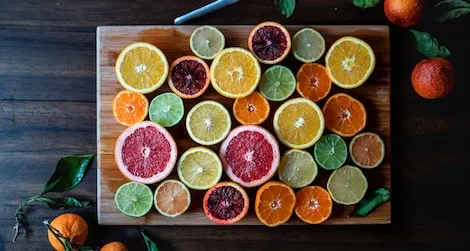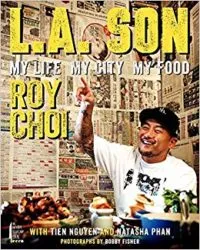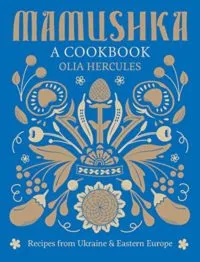
New Year, New Palate: Cookbooks to Kickstart Cooking Resolutions
This content contains affiliate links. When you buy through these links, we may earn an affiliate commission.
Do you have cooking resolutions for 2019? I do. Last year, I set myself a challenge: cook 100 recipes I’d never cooked before. The Carnegie Library system was fundamental in accomplishing this task; I have a lot of cookbooks, but I don’t have that many, and besides, the fun in a challenge like this is going places I’ve never been before and might never go again (looking at you weird leftovers that sat in the fridge for two weeks and didn’t even get emptied out of the Tupperware before they got trashed).
I’m going for 100 more this year, and I’ll be keeping a weekly log of my adventures over on another interweb space as well as posting pictures of each recipe, be it a rousing success or epic failure, on instagram (@irate_corvus). I’ve purchased a few new books, and hauled a bunch more home from the library, in preparation for the calendar rollover. I thought I’d share some of them with those of you who have resolved to add a little more variety to your own home repertoires in 2019.
Some of the books I choose tend toward the simple while others aim for more complex dishes. Some are meant for home chefs on tight schedules while others explore more time-consuming recipes that require more expensive ingredients. One of the many beauties of the massive variety of word cuisines, and the access we now have to them, is the ability to pick and choose which is right for you on a given occasion. Also keep in mind that if there’s a dish that looks delicious, but an ingredient you or someone in your family or friend group doesn’t like or has an allergy to, most recipes can be modified. My kids, for example, are still learning to appreciate spice, so if a sauce has some heat, I make and keep it separate, or swap out the type of pepper. I have an allergy to pineapple, so I sub in orange or grapefruit. Many of the reputable cooking sites will have substitution suggestions. Or you can channel your inner chef and wing it.
Depending on where you live, some of the regional and/or speciality ingredients may be difficult to find. Amazon has a fair number of the non-perishable ones and even some of the less delicate perishables. If you prefer to avoid Amazon, you can use them as a search engine for third party purveyors and then see if those purveyors have their own websites. There are places to get fruits and veggies, etc., but expect to pay for overnight or two day shipping. Know going in some of the speciality ingredients themselves are expensive but that if it’s out of your budget, you can probably find a more affordable substitute. Your dish may not taste exactly the same but you’re still trying something new.
And so, without further ado, I present to you, in no particular order, cookbooks to kickstart your your cooking resolutions:
L.A. Son: My Life, My City, My Food
Both cookbook and memoir, Choi leads readers through his own history as, first, a young Korean immigrant to L.A., then a troubled young man who almost took the wrong path, only to be saved by food. Food of all sorts, food with which he became obsessed. How he came to be a classically trained chef and worked for years in fine dining, then struck out on his own, making his mark on the American culinary scene: combining, fusing, creating a reflection of who he is, of his America, in every dish. This book is alive with what it is to be American. Oh, and the two pounds of carne aside (pg 109) I made for my family of four disappeared in one sitting.
Meatloaf is underrated. I know, I know. We all complained about it as kids. But as adults with jobs and our own children and schedules and the inevitable-last minute disaster, we can’t afford to ignore something so versatile. It can be made out of any type of ground meat or combination thereof. You can put pretty much anything you want inside of it. No matter what your comfort cuisine is, you can flavor your loaf accordingly. You can prepare it ahead of time and cook it when you get home. You can cook it ahead of time and reheat it when you get home. It doesn’t take any longer to make a double recipe and then, not only do you have dinner but lunch for several days thereafter or a second dinner for later in the week. You can bake it, make it on the stovetop, or cook it in the slow cooker. You can make it in the microwave if you have to. If you’re doing a meal train for someone else, it’s easy for them to finish up and they’ll have leftovers. It’s cheap! It’s easy! You can top it was ketchup or accompany it with a fennel, celery root, lemon, and Pecorino salad (pg 224). My favorite incarnation is from Aarti Sequeira’s Aarti Paarti: An American Kitchen With An Indian Soul (pg. 212) but I’m trying the Swedish Meatball Loaf (pg. 77) from Every Oven this week because the seventy billion people who go to Ikea can’t be wrong.
My family is, for the most part, Polish and Russian. There’s a little Austrian thrown in, and a few folks who got stuck in that sliver on the map that kept going back and forth between Poland and Russia; it messes with my percentages but not my overall cultural DNA. Unlike the majority of Jewish Americans, there’s also a branch of my family that went from Russia to Cuba before getting booted by Castro and ending up here—and it’s unclear as to whether my branch of the tree is directly related to that branch or just adjacent on the trunk. My great-grandmother was born in Atlanta, Georgia, which is also highly unusual and means I should probably learn how to make biscuits.
Regardless, I grew up eating, at least on Jewish holidays, what was purported to be traditional Eastern European Jewish food. It was a thing and to be honest, I did not like it, Sam I am.
Since moving to Pittsburgh, I’ve had Polish and Russian food at restaurants. They were…not what I ate at home. Part of this is likely rooted in Old-World Jewish communities being kept apart both by choice and by anti-Semitism. These ghettos were often on the poorer side of the economic spectrum and made do with what they could get. Their cooking was also restricted by the laws of kashrut.
It’s likely there are other factors which contributed to my childhood experiences but we won’t go into those here.
All of that to say, part of my 100 recipe mission this year is to rediscover my own culinary heritage. No liver, though. I went to nursing school. I know what they’re for.
Look, everyone has a type, okay? Mine happens to be the Middle East. Ghayour’s book stood out when I was flipping through because there’s a recipe for bacon pitas (pg. 31) and pork isn’t something I’ve seen a lot in recipes from this region (it’s prohibited by both Judaism and Islam. The recipe doesn’t specify pork, though neither does it specify non—where typically, if I have seen bacon in recipes from this region, it’s been turkey or lamb, which can be made kosher or halal). Also of note are multiple cheese creations (including Feta Bites with Preserved Lemon Jam on pg. 75 and Pan-Fried Halloumi with Pomegranate Seeds (which you can buy already hulled), pea Shoots & Pomegranate Molasses on pg 82) and a Preserved Lemon Martini on pg. 54, which I can 100% see myself drinking on the beach in Tel Aviv. There are also great looking spins on classics such as latkes with chickpeas added in, salmon tartare, and a Greek Salad with Basmati Rice (pg. 131).




 A Meatloaf in Every Oven
A Meatloaf in Every Oven Mamushka: Recipes from Ukraine and Eastern Europe
Mamushka: Recipes from Ukraine and Eastern Europe Sirocco: Fabulous Flavors From the Middle East
Sirocco: Fabulous Flavors From the Middle East









